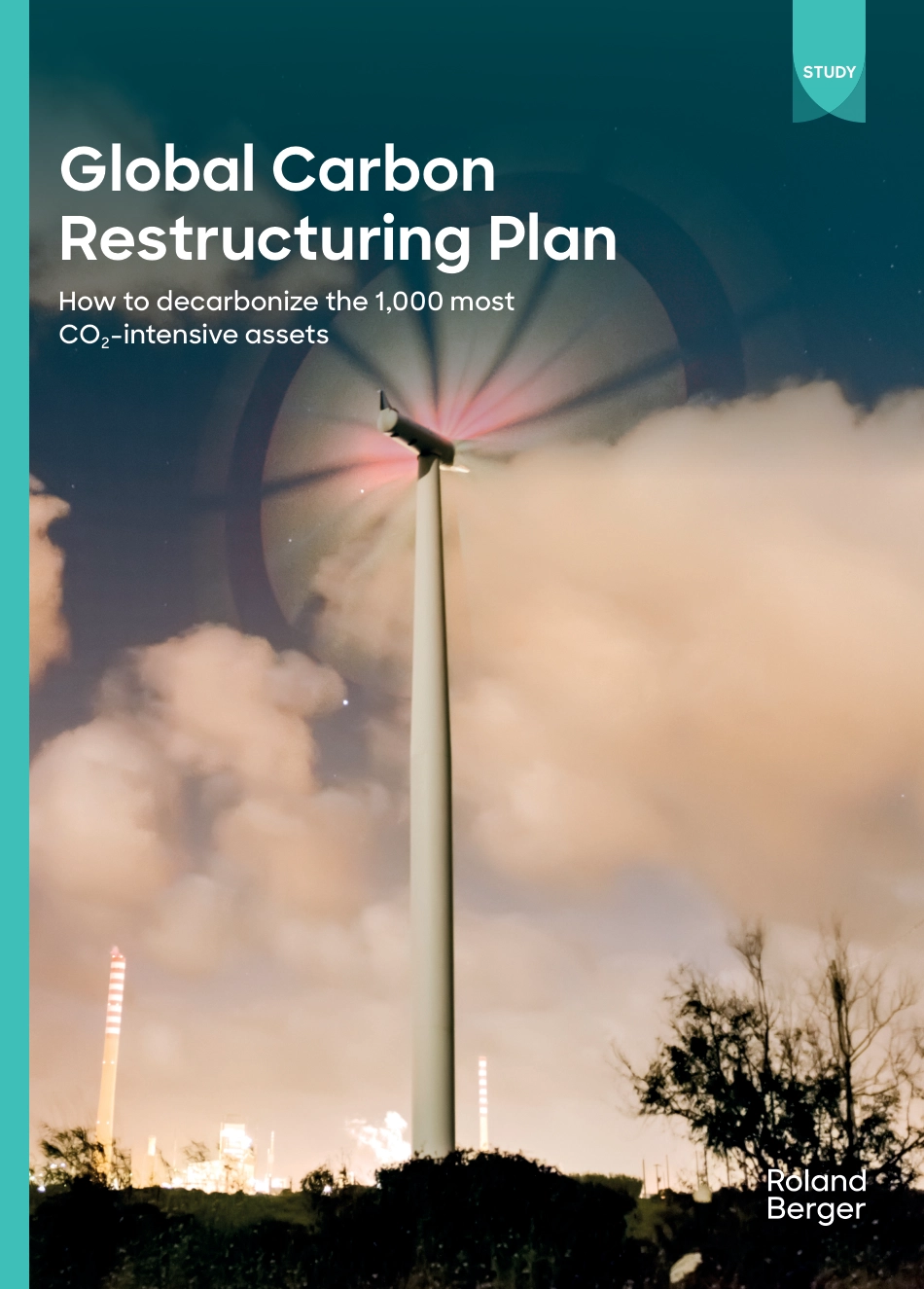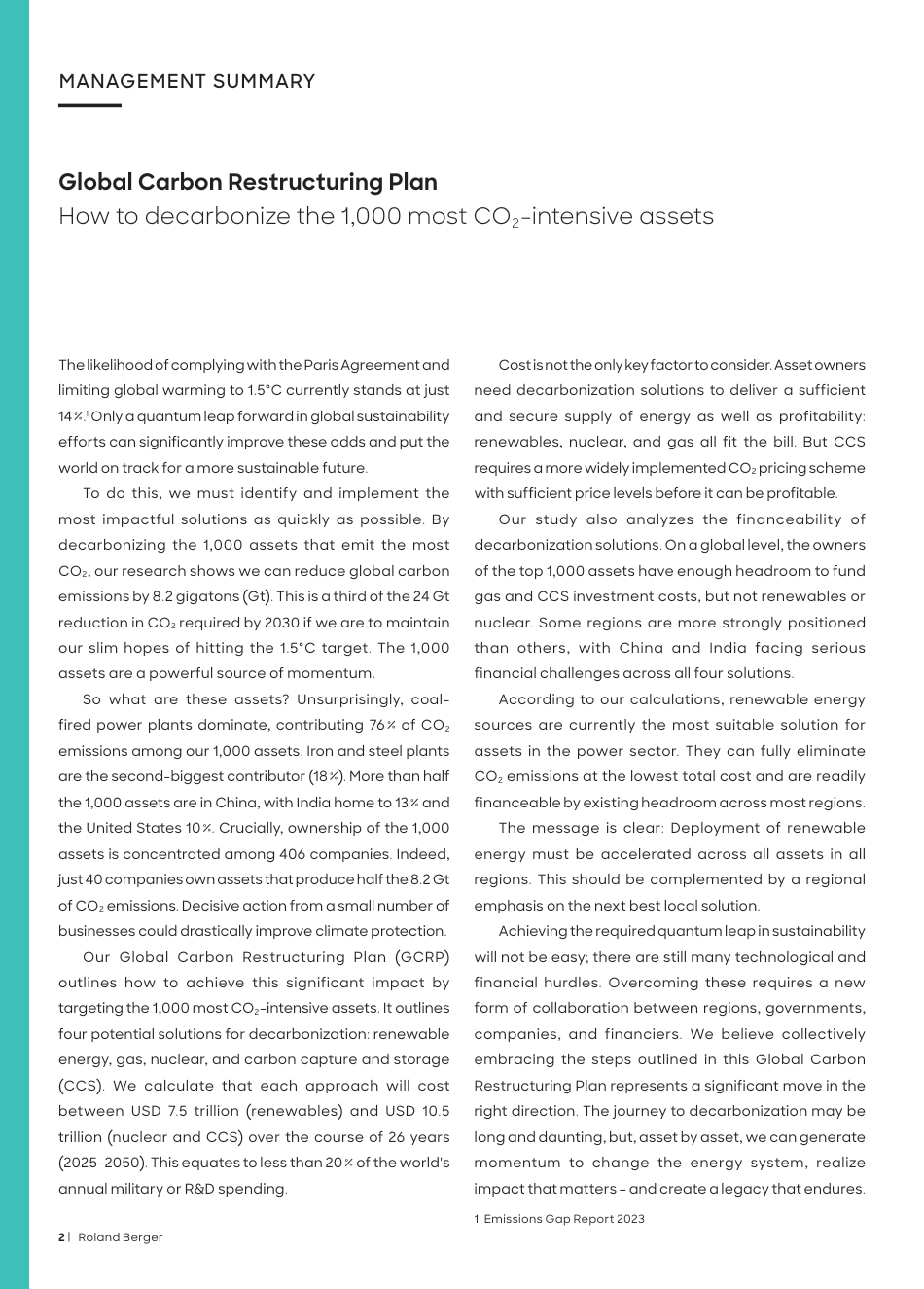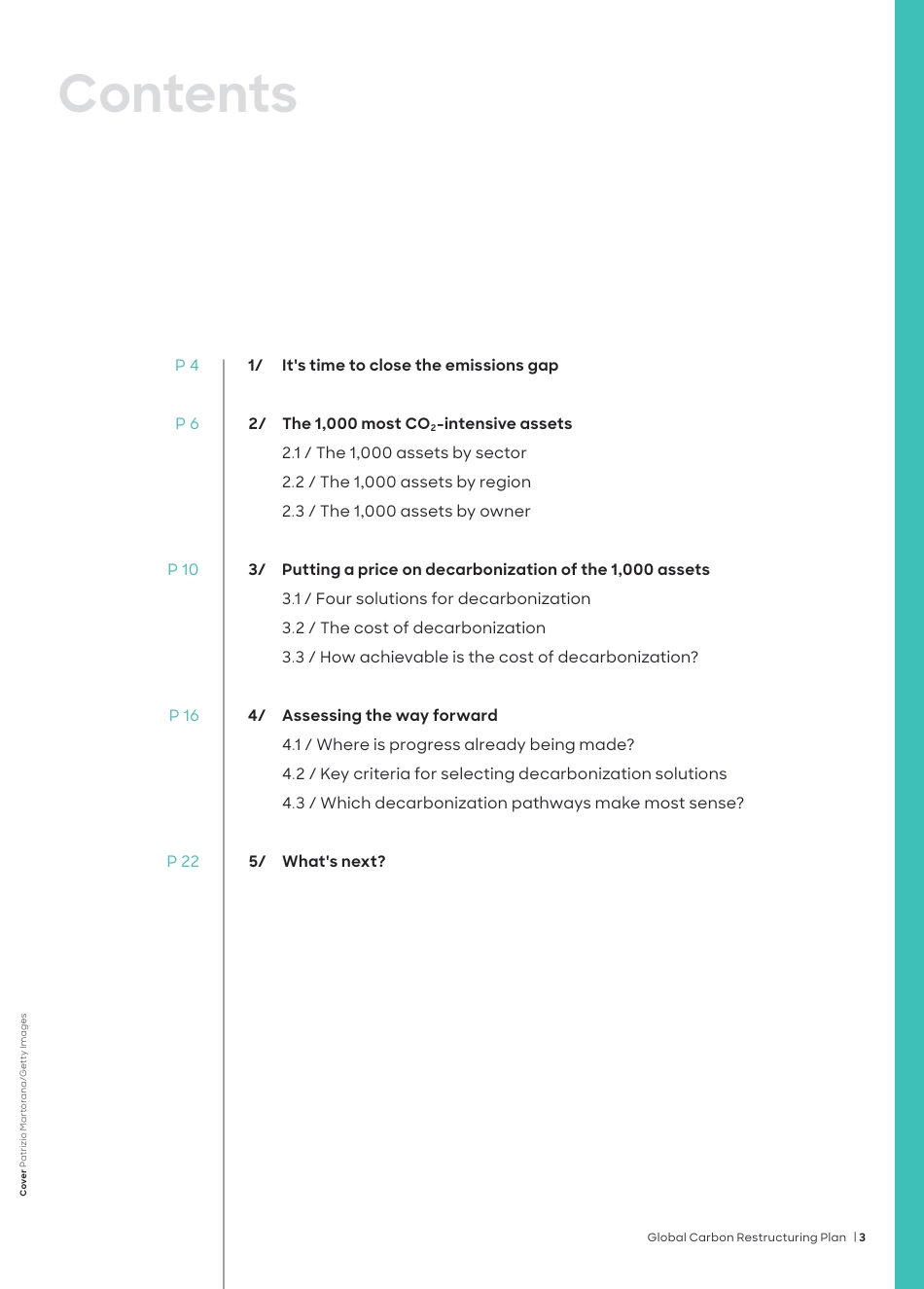Howtodecarbonizethe1,000mostCO2-intensiveassetsGlobalCarbonRestructuringPlanSTUDYMANAGEMENTSUMMARYGlobalCarbonRestructuringPlanHowtodecarbonizethe1,000mostCO2-intensiveassetsThelikelihoodofcomplyingwiththeParisAgreementandlimitingglobalwarmingto1.5°Ccurrentlystandsatjust14%.1Onlyaquantumleapforwardinglobalsustainabilityeffortscansignificantlyimprovetheseoddsandputtheworldontrackforamoresustainablefuture.Todothis,wemustidentifyandimplementthemostimpactfulsolutionsasquicklyaspossible.Bydecarbonizingthe1,000assetsthatemitthemostCO2,ourresearchshowswecanreduceglobalcarbonemissionsby8.2gigatons(Gt).Thisisathirdofthe24GtreductioninCO2requiredby2030ifwearetomaintainourslimhopesofhittingthe1.5°Ctarget.The1,000assetsareapowerfulsourceofmomentum.Sowhataretheseassets?Unsurprisingly,coal-firedpowerplantsdominate,contributing76%ofCO2emissionsamongour1,000assets.Ironandsteelplantsarethesecond-biggestcontributor(18%).Morethanhalfthe1,000assetsareinChina,withIndiahometo13%andtheUnitedStates10%.Crucially,ownershipofthe1,000assetsisconcentratedamong406companies.Indeed,just40companiesownassetsthatproducehalfthe8.2GtofCO2emissions.Decisiveactionfromasmallnumberofbusinessescoulddrasticallyimproveclimateprotection.OurGlobalCarbonRestructuringPlan(GCRP)outlineshowtoachievethissignificantimpactbytargetingthe1,000mostCO2-intensiveassets.Itoutlinesfourpotentialsolutionsfordecarbonization:renewableenergy,gas,nuclear,andcarboncaptureandstorage(CCS).WecalculatethateachapproachwillcostbetweenUSD7.5trillion(renewables)andUSD10.5trillion(nuclearandCCS)overthecourseof26years(2025-2050).Thisequatestolessthan20%oftheworld'sannualmilitaryorR&Dspending.Costisnottheonlykeyfactortoconsider.Assetownersneeddecarbonizationsolutionstodeliverasufficientandsecuresupplyofenergyaswellasprofitability:renewables,nuclear,andgasallfitthebill.ButCCSrequiresamorewidelyimplementedCO2pricingschemewithsufficientpricelevelsbeforeitcanbeprofitable.Ourstudyalsoanalyzesthefinanceabilityofdecarbonizationsolutions.Onagloballevel,theownersofthetop1,000assetshaveenoughheadroomtofundgasandCCSinvestmentcosts,butnotrenewablesornuclear.Someregionsaremorestronglypositionedthanothers,withChinaandIndiafacingseriousfinancialchallengesacrossallfoursolutions.Accordingtoourcalculations,renewableenergysourcesarecurrentlythemostsuitablesolutionforassetsinthepowersector.TheycanfullyeliminateCO2emissionsatthelowesttotalcostandarereadilyfinanceablebyexistingheadroomacrossmostregions.Themessageisclear:Deploymentofrenewableenergymustbeacceleratedacrossallassetsinallregions.Thisshouldbecomplementedbyaregionalemphasisonthenextbestlocalsolution.Achievingtherequiredquantumleapinsustainabilitywillnotbeeasy;therearestillmanytechnologicalandfinancialhurdles.Overcomingtheserequiresanewformofcollaborationbetweenregions,governments,companies,andfinanciers.WebelievecollectivelyembracingthestepsoutlinedinthisGlobalCarbonRestructuringPlanrepresentsasignificantmoveintherightdirection.Thejourneytodecarbonizationmaybelonganddaunting,but,assetbyasset,wecangeneratemomentumtochangetheenergysystem,realizeimpactthatmatters–andcreatealegacythatendures.1EmissionsGapReport20232|RolandBerger1/It'stimetoclosetheemissionsgap2/The1,000mostCO2-intensiveassets2.1/The1,000assetsbysector2.2/The1,000assetsbyregion2.3/The1,000assetsbyowner3/Puttingapriceondecarbonizationofthe1,000...



 VIP
VIP VIP
VIP VIP
VIP VIP
VIP VIP
VIP VIP
VIP VIP
VIP VIP
VIP VIP
VIP VIP
VIP